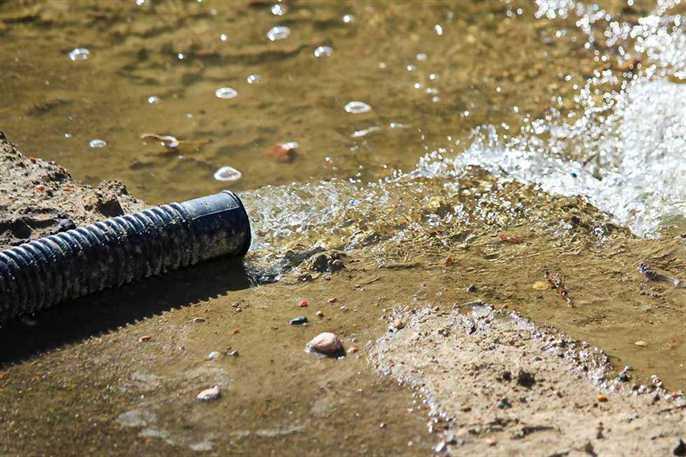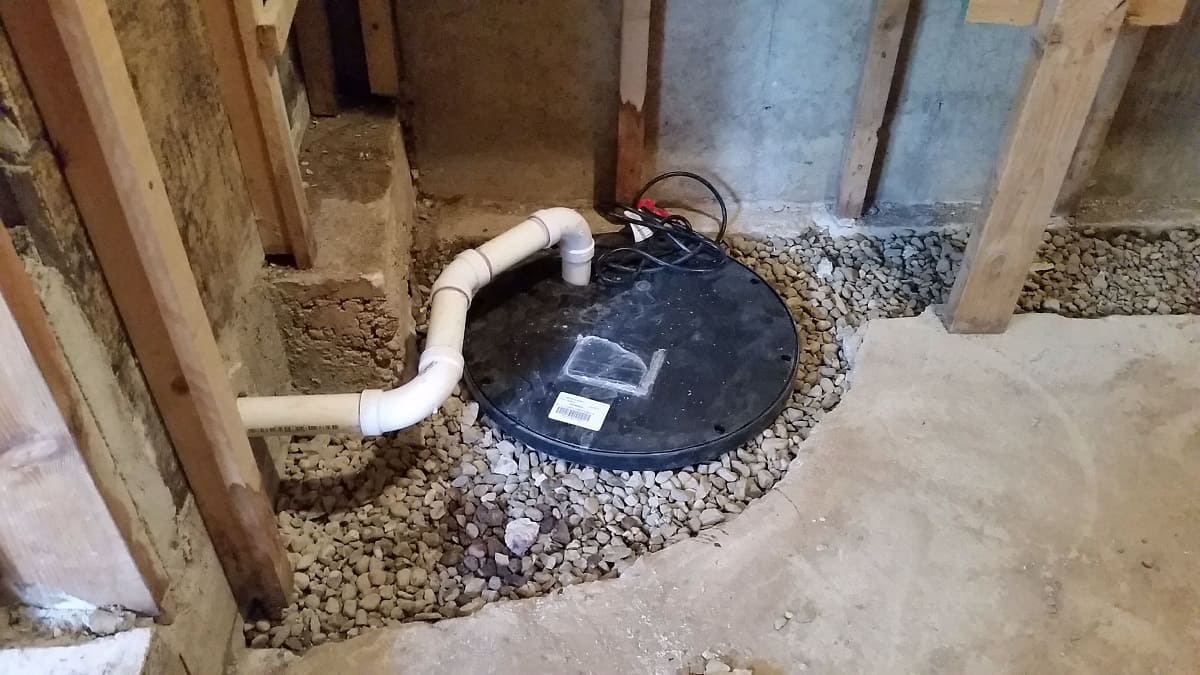Straightforward Methods to Keep a Sump Pump
Straightforward Methods to Keep a Sump Pump
Blog Article
We have unearthed this great article pertaining to How To Effectively Clean A Sump Pump down the page on the web and thought it made good sense to relate it with you on my blog.

Sump pumps are crucial components in lots of homes, particularly in locations prone to flooding or extreme wetness. They aid avoid water damages by effectively removing excess water from cellars or crawl spaces. However, like any other appliance, sump pumps require regular maintenance to ensure they function effectively when needed the most. Cleansing your sump pump is a crucial part of its maintenance, and understanding exactly how to do it properly can save you from expensive repair services and possible calamities.
Intro
Preserving a clean sump pump is vital for its appropriate performance and longevity. Ignoring this vital task can cause blockages, malfunctions, and eventually, water damage to your building. Consequently, discovering exactly how to clean a sump pump is vital for house owners that count on these gadgets to maintain their basements completely dry and safeguarded.
Signs of a Dirty Sump Pump
Knowing when your sump pump needs cleaning is critical for avoiding possible breakdowns. Some typical signs that indicate a filthy sump pump include odd noises throughout operation, reduced water flow, and noticeable particles in the pit. If you see any one of these signs, it's vital to cleanse your sump pump without delay to prevent any type of more concerns.
Planning for Cleaning
Prior to you begin cleaning your sump pump, it's vital to take some safety precautions. Beginning by turning off the power to the pump to avoid any type of electric accidents. Additionally, use appropriate safety equipment, such as gloves and goggles, to protect yourself from dust, particles, and possible virus.
Recognizing the Sump Pump
Before diving right into the cleaning procedure, it's vital to have a standard understanding of how a sump pump functions. Typically set up in a pit or basin listed below the cellar floor, a sump pump includes several crucial parts, consisting of a pump, a float button, and a discharge pipeline. When water builds up in the pit, the float switch turns on the pump, which after that pumps the water out with the discharge pipe, far from the building's foundation.
Detailed Overview to Cleansing a Sump Pump
Turning off the Power
Begin by detaching the power supply to the sump pump to prevent any type of crashes while cleansing.
Checking for Appropriate Performance
Before re-installing the pump, execute a quick examination to make sure that the float switch turns on the pump properly. Put some water into the sump pit and observe the pump's operation. If everything is operating appropriately, you can reassemble the pump and reconnect the power supply.
Getting Rid Of Debris and Dust
Utilize a container or an inside story to remove any noticeable debris, dirt, or sediment from the sump pit. Dispose of the particles properly to prevent it from blocking the pump or the discharge pipeline.
Cleansing the Pump and Float Change
When the pit is clear of particles, meticulously get rid of the pump from the pit. Examine the pump and the float switch for any indicators of damages or wear. Utilize a soft brush or towel to clean the surface areas and eliminate any type of built up gunk.
Flushing the System
After cleansing the pump and float button, purge the sump pit with clean water to eliminate any continuing to be dirt or debris. This will help guarantee that the pump runs smoothly and efficiently.
Maintenance Tips to Keep Your Sump Pump Clean
Along with regular cleansing, there are several upkeep tips you can follow to keep your sump pump in optimal condition:
Verdict
Cleansing your sump pump is an important aspect of its maintenance and ensures that it operates successfully when you need it one of the most. By adhering to the steps described in this guide and incorporating routine maintenance into your regimen, you can expand the life expectancy of your sump pump and protect your home from water damages.
6 STEPS ON HOW TO CLEAN A SUMP PUMP PROPERLY
UNDERSTANDING SUMP PUMPS
Your sump pump plays a crucial role in protecting your home by managing and removing excess water. It primarily functions as a “shield”, guarding your basement against the damaging effects of water accumulation. The pump is housed in a sump pit in the lowest part of your basement, and its job is to pump out any water that collects there.
During heavy rainfalls or when snow melts rapidly, water can infiltrate your basement, posing potential risks like flooding, structural damage, and harmful mold growth. Here, the sump pump springs into action, pumping out the intruding water and directing it away from your home.
SAFETY FIRST
Before cleaning, remember to prioritize safety. Disconnect the sump pump from the power source to prevent any accidental electric shocks. Also, wear sturdy gloves to protect your hands from any sharp or dirty components within the pump.
REMOVE THE SUMP PUMP
After ensuring your safety, the next step is to remove the sump pump from its pit. Doing this might require careful maneuvering as you don’t want to damage any pump components. Once removed, clean the sump pit to remove any accumulated debris or sludge.
INSPECT THE PUMP
Inspect the pump for any visible signs of wear or damage. Check the power cord, float switch, and impeller housing. If any components look worn out or damaged, consider replacing them to ensure optimal performance.
CLEAN THE PUMP
Thoroughly clean the pump with warm, soapy water. Make sure to rid it of any dirt, gravel, or other debris that might impede its performance. You can use a toothbrush to clean the small, hard-to-reach parts of the pump.
REINSTALL THE SUMP PUMP
Reinstall the pump into the sump pit Make sure it’s positioned correctly to remove the water effectively Once it’s back in place, reconnect it to the power source TEST THE PUMP
Finally, pour some water into the pit to ensure the pump works correctly. It should start automatically and begin pumping out the water; if it doesn’t, check the power source and the positioning of the pump.
Remember, while cleaning your sump pump is an essential part of home maintenance, hiring a professional plumber for a thorough inspection and cleaning at least once a year is also important. This will ensure that your pump is in optimal condition, ready to protect your home from potential water damage.
BEST PRACTICES FOR CLEANING SUMP PUMP DISCHARGE PIPES
Regular Inspection: Regularly inspect your discharge pipes, especially during heavy rainfall or snowmelt periods. Look for any signs of blockage or damage. Early detection of problems can prevent serious issues down the line. Periodic Cleaning: Over time, sediment and debris can accumulate in the discharge pipes, impeding the flow of water. Regular cleaning helps keep the pipes clear and functioning efficiently. You can use a high-pressure water jet to effectively clean the pipes. Insulation During Winter: In colder climates, discharge pipes can freeze, blocking the outflow of water. Protect your discharge pipes from freezing temperatures by insulating them with foam pipe insulation. This will ensure the sump pump can continue to discharge water even in freezing conditions. Proper Positioning: The discharge pipe should be positioned to direct water away from your home’s foundation. Improper positioning can lead to water seeping back into the basement. Ensure the pipe is long enough and angled correctly. Installation of a Check Valve: A check valve prevents water from flowing back into your sump pit after the pump has pushed it out. Installing a check valve helps maintain the efficiency of your sump pump and reduces the risk of flooding. Minimize Pipe Turns: Every curve or turn in the discharge pipe can decrease the efficiency of water flow. By minimizing turns and bends in your discharge pipe, you can increase the efficiency of your sump pump. https://www.fullspeedplumbing.com/how-to-clean-a-sump-pump-properly9999/

Do you appreciate reading up on How to Care for Your Sump Pump? Post feedback further down. We would be glad to listen to your thoughts about this blog posting. Hoping to see you back again later on. Enjoyed our entry? Please share it. Let someone else find it. Thank you for your time. Revisit us soon.
Click Here Report this page